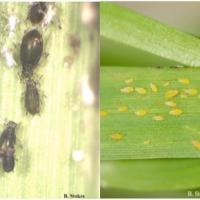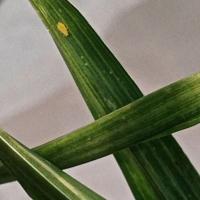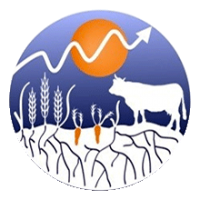Drought and Cereal Pests Research
If we go back in time twelve thousand years from the present, to a period marking the formation of the Puget Sound within the Pacific Northwest (PNW) region of North America, we see geo-climatic conditions drastically different from those predominating on Earth today. With one half of Earth's surface covered in ice, extensive glaciation drove massive landscape alteration and mass extinction of biota. This glaciation progressed via a feedback loop of changing abiotic forces,including drastic reductions of mean global temperature.
It is clear to me, as a REACCH summer intern, that within this ancient example, we may draw connections between past climatic trends and current climatic conditions. The connection lies within those mutual abiotic factors. Currently, global climate models (GCM) indicate that within the next fifty years there will be a mean global temperature increase. The effects of these projected temperature increases arealready observed in the changing conditions within North America, including the inland Pacific Northwest.
The Palouse region of the PNW inland zone is a critical producer of cereal agricultural crops namely wheat, barley and legumes. As weather patterns continue to change, this production is threatened.
Recent evidence from research at the University of Idaho in Moscow, specific to cereal pests in the Palouse agro-region, indicates that Aphid invasiveness may be affected by severe and ongoing drought more locally. Water limitation already has been observed to impact crop health directly in altered plant physiology from desiccation stress and in expanding phytophagous (herbivorous insects) pest range due to elevated temperatures and increased overwinter survival.
One of the least studied factors are the potential effects of climate and drought altered conditions on behavioral responses amongst insects. As a REACCH summer intern at the University of Idaho, I conducted a study of the behavioral responses and interspecies relations of two aphid pests infested upon a Palouse cereal wheat.
Research question:
I questioned how water limitation of the host plant would affect both aphid species with respect to species performance and within plant competitive interactions.
Organisms of interest:
- Metopolophium festucae cerealium MFC
- Rhopalosiphum padi (L.) RP
- Triticum aestivum L. var Kelse Host spring wheat plant
Image of both aphid species utilized in study, RP at right and MFC at left.
Basic study design
- Plants were grown under drought conditions (limited water availability) and replete conditions (ample water availability) in a greenhouse environment.
- Plants were exposed to both aphid species, together on the same plant and alone on a plant, and observed for a ten-day period in four growth chamber microcosm environments.
- Intrinsic growth rates were calculated from 3 counts taken during the observational period.
Results and Conclusions
Results indicate that there is a strong within plant competitive interaction occurring between aphid species. This means there is evidence that multiple aphid species, when on the same plant, compete by inhibiting reproduction of conspecifics. Here, I observed that MFC on both drought and non-drought stressed plants, competitively inhibited RP population growth rate. Additionally, I observed that MFC present with RP on the same host plant exhibited significantly enhanced population growth rates than those on plants without the presence of RP. Most striking perhaps was the significant boost in MFC performance on drought-stressed plants in the presence of RP competitors.
If MFC performance is enhanced with the presence of a cross species competitor, such as RP, its potential invasiveness as a cereal pest in the Idaho Palouse could increase significantly. Range expansion and greater alteration of host plant physiology could drive heavy losses in overall cereal crop productivity.
As population increases, the risk of diminished agricultural productivity becomes doubly concerning. Recently, the FAO projected that agricultural production must increase by upwards of fifty percent by 2050 alone in order to meet an increasing global demand. Research programs like REACCH are important and timely in their efforts to promote sustainable agricultural practice and to mitigate for losses in agricultural outputs.
REACCH Undergraduate Summer Interns come from all over the country to spend 9 weeks with REACCH scientists conducting research, gaining job and graduate school training, and sharing their experiences. These blogs are the culmination of their research experience.
Edited by Leigh Bernacchi

Palouse Ag System

Aphids

Aphids on spring wheat

If you’re interested in climate and agriculture, continue reading articles at the blog aggregator, AgClimate.net

